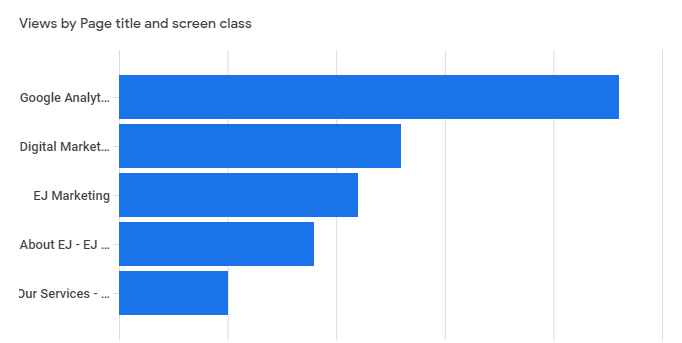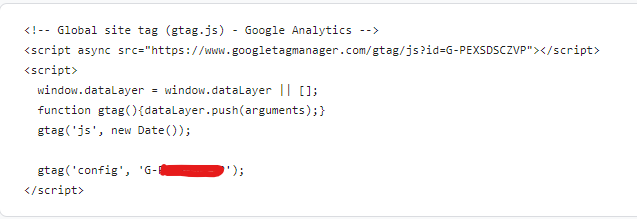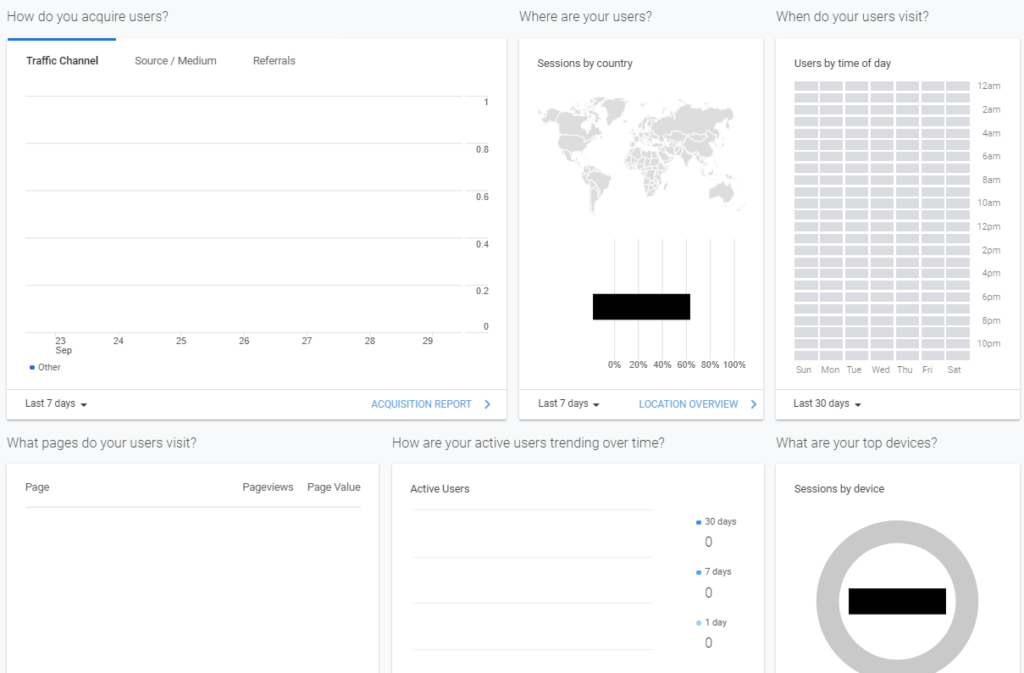Digital Marketing is one of the most competitive environments you can find out there. Every day businesses of all sizes and from all over the world join this fierce competition to dominate the online marketing space. So, how can you compete against them?
We have encountered many websites with internal pages that take an astonishing time to load (more than 3 seconds is already too much). On other websites, the bounce rate is so high that less than 6% of users take the time to actually see what the business has to offer, and less than 1% contact the business!
We
Whether you are advertising through the Google Ad network, running bing Ads, Facebook Ads, or any other platform, if you want to succeed you need to take advantage of all the tools they have available.
How Can Google Analytics Help Your Business?
Google Analytics is a free tracking tool that helps marketers understand audiences and their interaction with websites. Using analytics it’s easy to tell what works and what doesn’t. What catches people’s attention and what doesn’t. And most importantly, you can optimize based on the results.
In a nutshell, it can keep track of interactions that take place within your website and show you how your goals are being achieved through it.

Knowing how people interact with your website will allow you to make the changes that you need in order to increase your profits. There are metrics like average time on page, bounce rate, search queries, and average page load time that give you information to make the necessary changes to reach your overall business objectives.
We have encountered many websites with internal pages that take an astonishing time to load (more than 3 seconds is already too much). On other websites, the bounce rate is so high that less than 7% of users take the time to actually see what the business has to offer, and less than 0.5% contact the business!
Some of these issues are hard to fix even if you are able to identify them; nevertheless, they are impossible to fix if they’re not identified in the first place.
Combine the old-school marketing “secrets” with the power of precise analytics!
A Real-Life Example of How It Can Help
R***L Construction is a home remodeling company that built its website 5 years ago and never marketed it. On top of that, they did not have Google Analytics installed (or any other analytics tool). Until the performance audit of the website, they didn’t realize that their “top-selling” page was taking 8.7 seconds to fully load on average.
People were leaving the website because of it, and owners didn’t know!
In fact, the website itself had less than 85 visitors a month and received 0 business calls a month from it. Their “top-selling” page was actually a local business listing website they had subscribed to.
Although many of the mistakes and issues were easy to determine at the mere sight, had they used analytics before, they would’ve been able to see that something was wrong. Since the website was underperforming and needed a redesign, we proceeded to build the new website following known best practices.
We didn’t have any previous data, but the website was easy to improve.
No more technical loading speed issues, no more weak copy, more intuitive design, mobile-friendly, and SEO friendly.
The results after a couple of months?
- 280 – 370 monthly visitors
- Less than 2.3 s on average loading time
- 4 – 6 calls a month
Competition is really low in their area, which made it much easier to improve their results.
Without any further work, the web site’s overall performance increased by about 4.5 times. Also, all traffic data and interactions are being tracked with analytics. Should they need to improve something, they will have the data to back it up.
Easy Installation and Setup
Above all, installation is simple, all you have to do is add a small JavaScript tracking code on every web page you want to track. The website data will be imported into the Google Analytics platform and you will be able to start having a more comprehensive profile from how website users interact.
To set it up, all you need to do is go to their website and sign up for an account: Google Analytics
Then follow the steps until they provide you with the Analytics tag (code snippet). Shouldn’t take more than 4 minutes.

Since most websites contain a header, it’s usually as simple as adding the JavaScript code snippet provided by Google to the header file and you will begin tracking activity throughout your entire site.
You can also use a plugin and just provide the Tracking ID which is UA-XXXXX or G-XXXXXX.
Pay-Per-Click & Google Analytics
Marketing is constantly changing.
Traditional marketing such as face-to-face, print ads, flyers, and brochures have been significantly replaced by Digital Marketing (not completely replaced, only significantly).
86% of Americans use the Internet for personal purposes, and they use it daily.
That’s why Pay-Per-Click and other digital marketing tactics have become so relevant, and why more business owners chose this road every day. Once you start focusing on digital marketing campaigns, you need to consolidate all your efforts and look in detail at all the data collected in Analytics to optimize your campaigns.
Use It To Understand Your Audience
Google makes it easy to see detailed information on how people spend time on your website.
You can see where the traffic is coming from, what city you’re more popular in, how much time they read what you have to say, and use that data to optimize the website.

It allows you to create different Audiences based on specific goals that you’ve defined (see Create and Edit Audiences – Google).
Of, course these goals will vary from one industry to another. But, let’s say you have an E-Commerce website, and you would like to specifically target your ads to people who have reached the shopping cart landing page. You can do that.
These people were just one click away from making a purchase from you, but something stopped them. They bounced out. Audiences accrued can help you to re-market to these people and increase the likelihood of getting a new customer.
This information can also give you some insights into how new users behave in comparison to returning visitors.
As they have taken the time to navigate through your website and selected the items they want, you are able to understand what works and what doesn’t.
It may take you some time to gather enough data depending on your traffic. But, it’s a fact that the more data you are able to track, the higher chances of becoming more prominent to your users.


